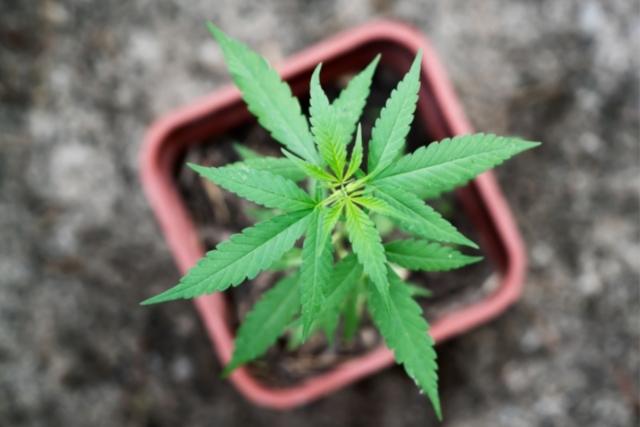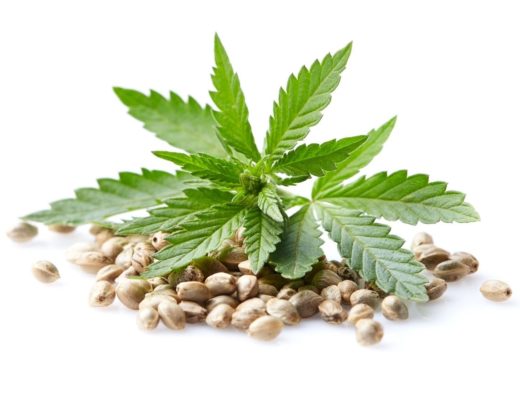Cannabis dispensaries use the terms indica and sativa to group medical strains. The definition of the plant varieties used to be more definitive. However, now the terms are more like general guidelines for consumers after years of crossbreeding cannabis plants.
A Brief History of the Cannabis Plant
The cannabis sativa species was first identified and named in Linnaeus’s Species Plantarum in 1753. Three and a half decades later, Jean-Baptiste Lamarck, a French biologist, recognized two cannabis subspecies—sativa and indica. He noted the different physical characteristics when identifying the two subspecies. Several decades later, a Russian botanist, Dmitrij Janischewsky, discovered a third cannabis subspecies—Ruderalis. You won’t see much of Ruderalis in U.S. medical cannabis strains. The subspecies produce low levels of THC.
What is an Indica Plant?
The indica plant has broad leaves and is shorter than the sativa. These grow short and stout and have a shorter cultivation time than sativa plants, allowing people to cultivate them in cooler regions. Regarding the body’s reaction to indica flowers, these are referred to as sedative strains. Good for pain, excellent for sleeping, but not as effective for daytime activities.
What is a Sativa Plant?
On the other hand, the sativa plant grows talk and has skinny, almost fingerlike leaves. It has a more extended cultivation period than indica, making it more suited for growing outdoors in a warm climate. Sativa plants are classified as more energizing and uplifting than an indica. Additionally, these are ideal for daytime use because they won’t put you to sleep.
What is a Hybrid?
Most medical cannabis strains are hybrids. There are few pure sativa and indica plants left. However, you can find flowers that are more dominant in one area than another. The most popular cannabis strains have their entire family tree on display. This benefit allows you to see the history of the plant and the possible family traits. For example, if a flower has several relatives that produce an uplifting effect, there’s a good chance you’ll experience that characteristic with the strain you’re reviewing.
Understanding Medical Cannabis “Strains”
When you look online and go to the dispensary, you’ll see the term “strain” repeatedly used to describe the different flowers and concentrates available. Along with sativa, indica, and hybrid, this phrase is outdated. There’s no one to blame for these changes. As more research is available about medical marijuana, modifications are necessary.
Many experts cringe at the term “strain” because that’s what the scientific community refers to bacteria, molds, and other infectious agents. Instead, the preferred word specialists are leaning towards is cultivars.
What is a Cultivar?
“A cultivar is an assemblage of plants that (a) has been selected for a particular character or combination of characters, (b) is distinct, uniform, and stable in these characters, and (c) when propagated by appropriate means, retains those characters….”
The bottom line:
Cannabis cultivar names are used to identify different products. However, the name and terms like sativa, indica, and hybrid won’t help you determine which cultivar matches your pharmacological needs.
What is the Best Way to Know the Different Benefits of Each Cannabis Cultivar?
Its easier to classify plants by THC dominant, CBD dominant, and their terpene profile. Breeders can also break it down by more specific phytocannabinoids. Cannabis strains with minor cannabinoids are becoming more prominent. For example, flowers with more CBG can offer improved focus. Additionally, plants with a higher percentage of CBC boost the anti-inflammatory properties already available through the THC, CBD, and terpenes in the strain.
Three main elements make each medical cannabis varieties differ: Cannabinoid content, terpene content, and environmental differences.
Cannabinoid Content
The blend of cannabinoids makes all the difference in the cultivar’s profile. For example, you’ll see a big difference between a flower that contains a high THC percentage and one with a high amount of CBD. Additionally, you’ll see a different effect with a cultivar with a nearly even ratio of CBD and THC. Breeders have been honing their craft for a few decades now. As more states legalize cannabis, the future holds endless possibilities. There are over 140 known phytocannabinoids in the plant’s trichomes. That leaves many combinations to work with to develop specific cultivars for medical conditions.
Clinical trials reviewing specific combinations of cannabinoids and terpenes show beneficial results already. Additionally, studies by cannabinoid expert Dr. Ethan Russo, blending THC, CBD, and the terpene linalool may reduce aggression, alpha-pinene and THC might improve memory, and CBD and THC together have the potential to provide neuroprotection.
Terpene Content
As mentioned above, terpenes play a significant role in determining how a specific cannabis cultivar works. Researchers have identified over 100 terpenes in the plants. The aromatic compounds provide the fragrance produced by different flowers and medicinal benefits. These medical advantages complement the perks of cannabinoids.
Environmental Differences
But, wait, there’s more! Unless the growing conditions are the same, changes can result in different cultivar phenotypes. Yes, that can get confusing. But many cultivators use clones rather than seeds, which helps stabilize the properties. The other variables with the environment include temperature, nutrients, soil conditions, and grow time.
For example, if you harvest too soon or too late, the cannabinoid percentages change. As a result, THCa starts to change to CBN, and levels of CBGa drop close to zero. The slight change in cannabinoids can make all the difference in the advantages of a specific plant.
There’s a lot more involved with choosing the right medical cannabis strain than sativa or indica. These terms might do a decent job of guiding you to a flower that is great for daytime use or one that’ll help you sleep. However, you’ll get a better match for your needs by looking at the other characteristics. Additionally, if you have questions about specific terpene benefits, your dispensary associate should be able to guide you to the right aromatic compounds.





No Comments